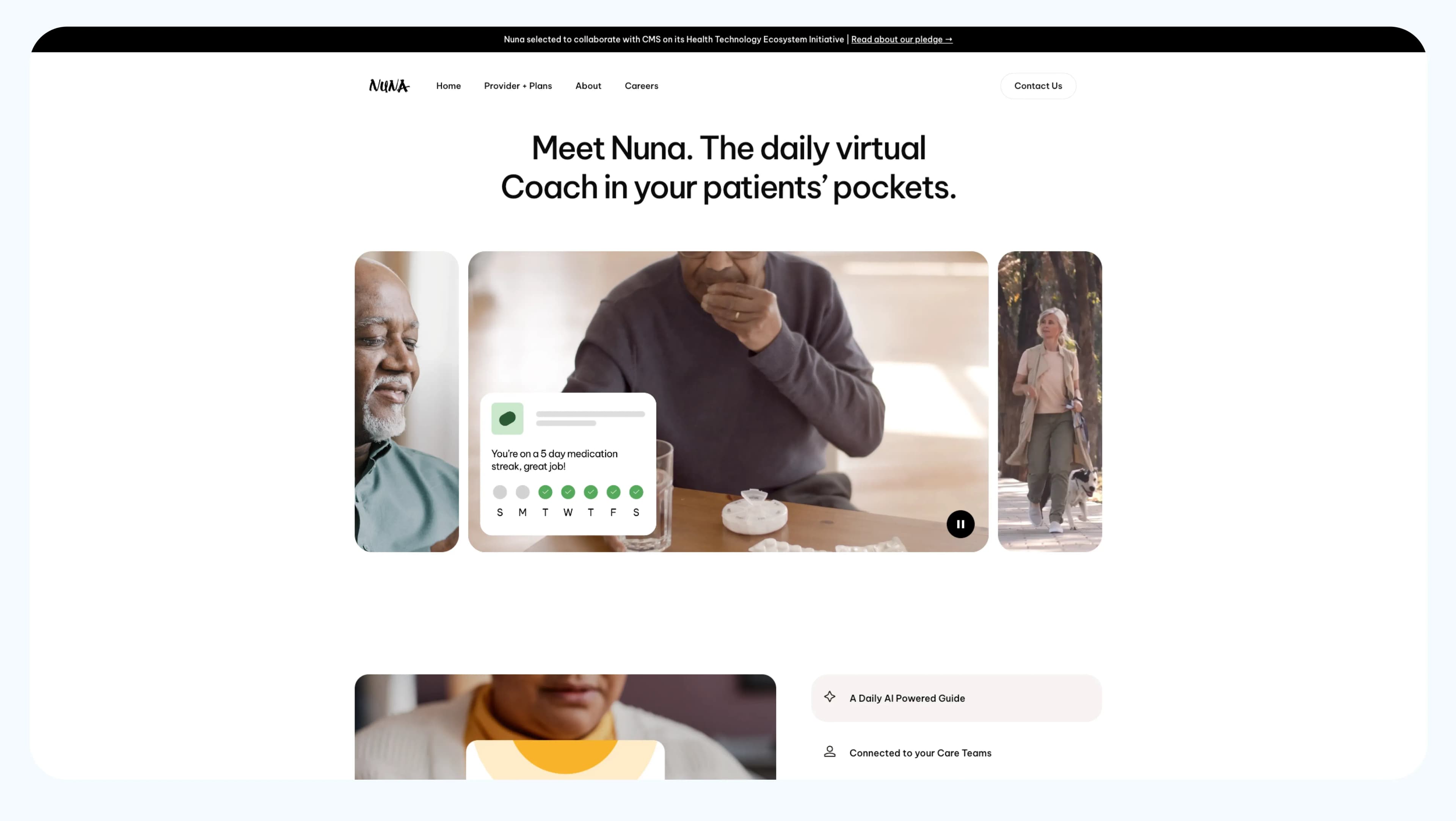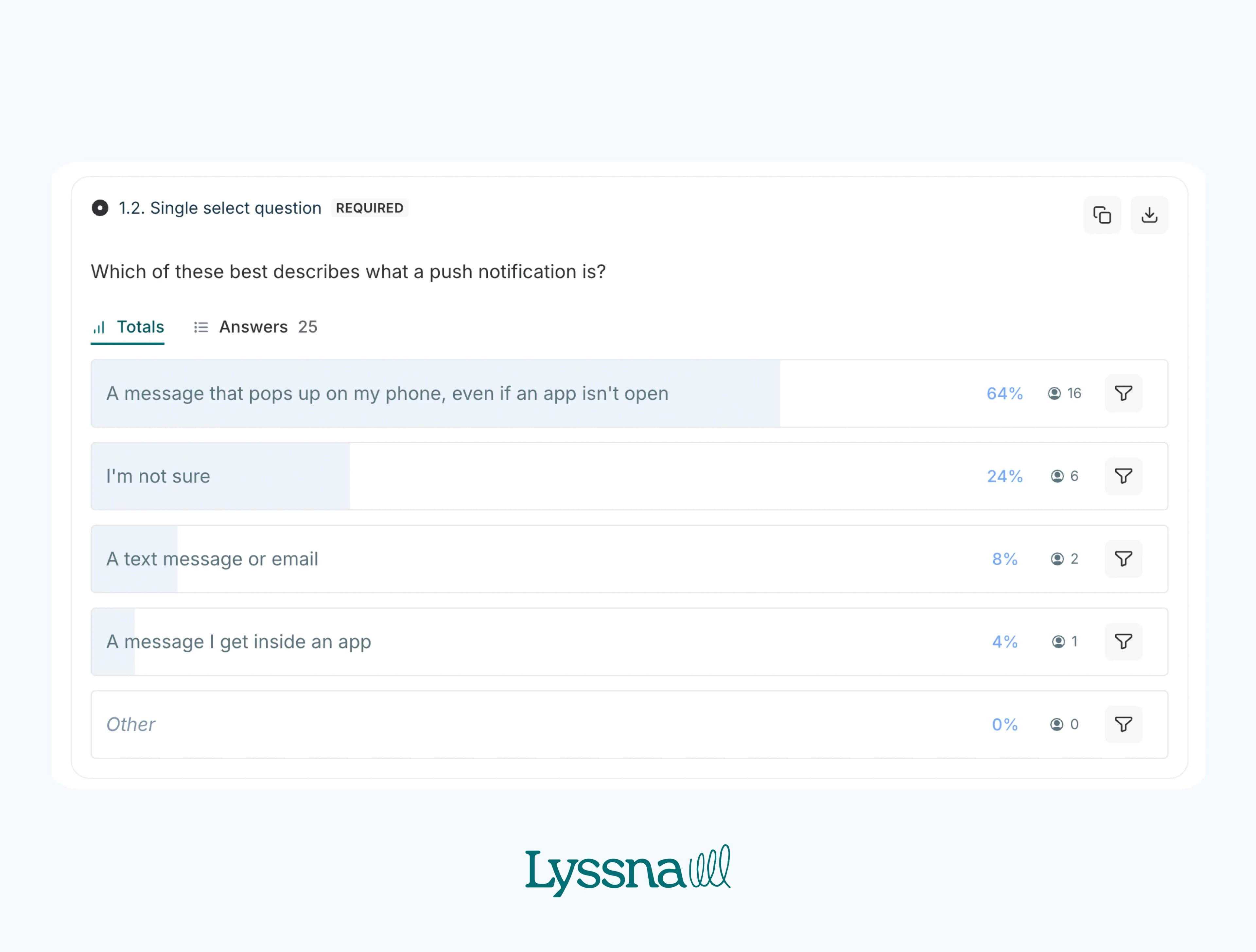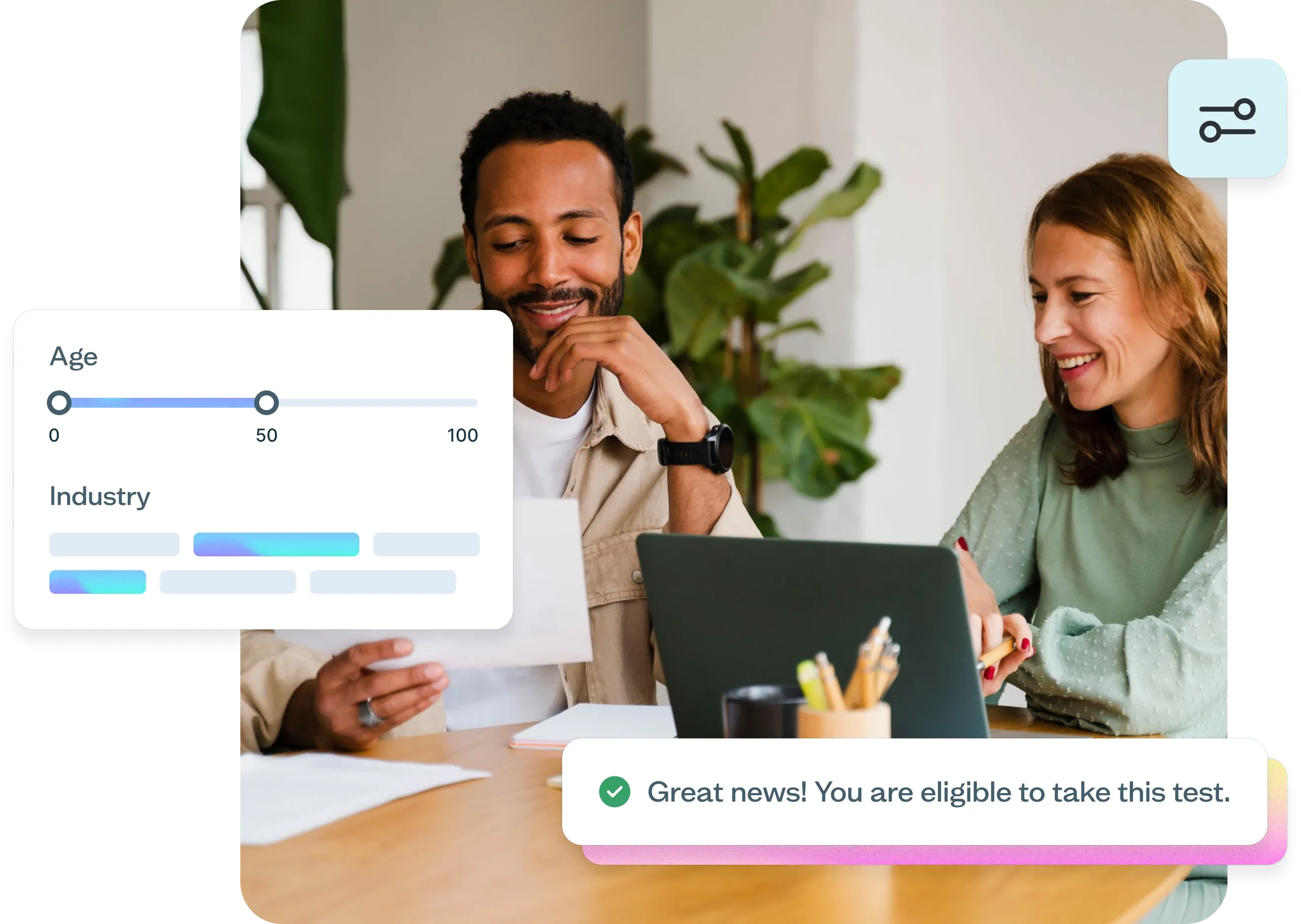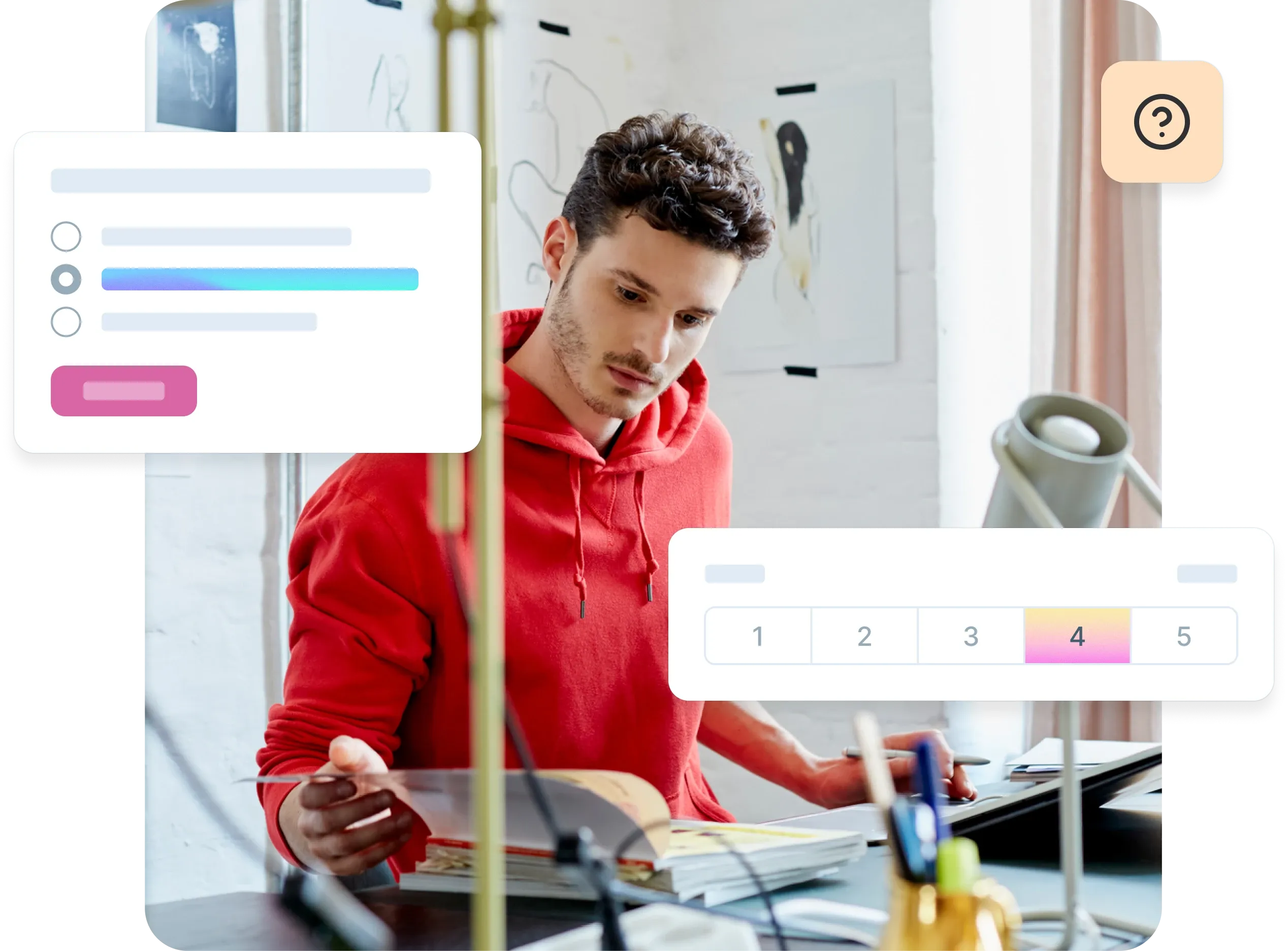How Nuna cut onboarding time by 80% using Lyssna
We speak with Ali Maggioncalda, Lead Product Manager at Nuna, about overcoming strict healthcare research constraints to gather same-day user insights and reduce onboarding time by 80%.
Summary
Explore how Nuna uses Lyssna to navigate strict healthcare regulations and accelerate decision-making, resulting in 80% faster user onboarding and data-driven product development for their healthcare app.
Key results at a glance
80% reduction in onboarding time (many minutes saved).
Hours instead of days for critical user feedback.
Fixed confusing terminology that could have impacted 1 in 3 users.
Same-day turnaround for demographically-targeted research.
“I'm going to run a Lyssna survey and we’ll have data to base this decision off in two hours.”
Ali Maggioncalda
Lead Product Manager
Nuna's story

Nuna is on a mission to make managing chronic health conditions like high blood pressure and diabetes easier and more enjoyable.
“We’re trying to apply some of the concepts from gamification,” Ali Maggioncalda, a Lead Product Manager at Nuna, explains. “Healthcare and health systems can be so scary. We don’t want to diminish that by making the app feel frivolous or silly, but we do think there’s value in rewarding people for making healthy choices with little things like badges and points where it makes sense.”
By partnering directly with hospitals and healthcare institutions, Nuna’s AI-powered tools and mobile app help care teams stay connected with patients between appointments in a more sustainable way.
Working within an organization of around 100 employees, Ali helps lead product development on the patient mobile app team, bringing her background in human biology and service design to tackle complex healthcare challenges.
Before Lyssna: Regulatory roadblocks, slow insights, and decision paralysis when internal opinions didn’t align.
After Lyssna: Same-day research results, data-driven decisions, and 80% faster user onboarding.
Get insights in hours, not days
See how Lyssna's panel and testing tools can accelerate your decision-making. Start researching today.
Why healthcare companies often struggle with user research
When Ali joined Nuna, she quickly learned that healthcare brought its own distinct research challenges.
“This was my first time working in the highly regulated health tech space,” Ali recalls. “Understandably, there are a lot of constraints around reaching your end user. Not only might you have to go through the partnering healthcare institution, but there’s also a lot of PHI (protected health information) that you can’t take lightly.”
The strict regulations mean that getting user feedback can take days or even weeks. Even when you can speak with users, sharing insights internally is complicated.
“You can’t use direct quotes accompanied by information like age and initials if you can potentially reverse engineer who that person is,” Ali explains. “It makes it challenging to learn and act on insights quickly.”
Adding to the complexity is a gap between the Nuna team and their users. As Ali explains, they need insights “based on people demographically similar to our users, not just the biases of our relatively young, healthy, and techy employee base.”
This disconnect can often lead to internal debates. “It’s really helpful for unsticking conversations within the internal team where strong opinions are rooted in personal experience or a family member’s experience,” Ali explains. “It’s all totally valid, but which would address the largest pain point and for the most users?”
These well-intentioned but opinion-based discussions were slowing down decision-making at a time when Nuna needed to move fast. “We needed a way to support and refute assumptions much more quickly,” Ali says.
How Nuna uses Lyssna for healthcare user research
Ali’s solution came from her own history with Lyssna. “I started using Lyssna years ago, when it was still UsabilityHub,” she shares. “I was a grad student trying to conduct user research for projects in school.”
After using Lyssna throughout graduate school and running her own startup, Ali immediately recognized how it could help Nuna overcome their research challenges. When she joined the company, she recommended it to her colleagues, and adoption spread across teams.
The ability to precisely target demographics was crucial for Nuna’s use case. “If we’re working on a project specifically for Medicare, we can target the US, age 65+, with a household income around the median for Medicare, and even orient our designs for people who self-report as having beginner or intermediate tech proficiency,” Ali explains. “And get results within the same day. That’s really powerful.”
“It’s incredible that Lyssna can unblock a decision I’m trying to make in just a matter of hours."
Ali Maggioncalda
Lead Product Manager
Nuna primarily uses Lyssna’s panel to find demographically similar people to their users, running surveys, preference tests, and prototype tests. The approach quickly spread beyond the product team. “After just a few months, we have design, marketing, product, and even engineering using the product to run tests,” Ali notes.
The workflow became straightforward: whenever internal debates arise, the team quickly gathers data. “Decision-making speed is the main benefit,” Ali says. “People at Nuna really care, which is a beautiful thing, but it also means a lot of strong opinions. It’s so valuable to bring data into meetings to move more quickly and support or refute key assumptions with statistical significance.”
Lyssna case study results
The impact of adopting Lyssna was immediate and measurable, with two standout examples demonstrating the platform’s value.
Testing push notification terminology
One morning, a simple comment in Figma sparked a research sprint that potentially saved a significant group of users from confusion.
“One of our clinicians left a comment on the Figma that said, ‘I don't know if our patients know what push notifications mean,’” Ali recounts. “We were like, good point. I don’t know if the average Medicare patient knows what a push notification is.”
Ali swiftly launched a Lyssna study, filtering for users aged 65+ with beginner or intermediate tech proficiency. The study asked participants if they’d heard the term ‘push notification,’ what they thought it meant, and ranked different ways to explain the concept.
“We realized only 65% of people were able to correctly define what a push notification was, even with only four option choices,” Ali shares. The winning alternative was elegantly simple: “a reminder that pops up even when the app is closed.”
The timeline for this discovery was quick. “I had the comment in Figma at 9:30 AM. By 1:00 PM, I had a direction. That’s pretty great,” Ali says. “That’s going to prevent potentially 35% of people from even having a moment of ‘I don't know what this means.’ Managing chronic health challenges is hard enough – we don’t need to add verbiage and clarity issues on top of that.”

Reducing onboarding time by 80%
The second major win came when Ali revamped Nuna’s onboarding experience. The challenge was finding what she calls the “Goldilocks number of screens” – enough to establish trust without causing fatigue.
“You need to do enough to establish trust,” Ali explains. “You can’t cut someone straight into the app because then they’re like, ‘Whoa, who are you? How are you related to my doctor? Warm me up a little bit first.’ But you don’t want it to be overkill, where it feels super clinical or like this is just another thing that’s going to be hard and time consuming.”
Using Lyssna’s unmoderated usability tests, Ali tested several different versions, measuring completion time, misclicks, and asking participants follow-up questions to try to avoid abandonment. “What did you find most difficult or frustrating?” she asked users.
The data revealed a sweet spot: a set of screens that would take five minutes or fewer for the average person to complete and all participants found “easy” or “very easy” to progress through.
The result: “We were able to launch a new self-enrollment and onboarding experience in time for a big customer launch, and cut the time to onboard a user by nearly 80%.”
This streamlined experience demonstrates how rapid research can directly impact business outcomes. The value was clear across the organization.
“It hasn’t been so challenging to show my colleagues the value of it, because things that used to take days now take hours,” Ali reflects. “That’s a pretty firm value prop there.”
When asked how she’d describe Lyssna in a sentence, Ali’s answer captures why the platform has become essential to Nuna’s workflow: “Lyssna is a user research platform that dramatically increases our rate of learning.”
For a company navigating the complex world of healthcare technology, where regulatory constraints meet the urgent need for user insights, that rate of learning makes all the difference.
Navigate research constraints with confidence
Learn how Lyssna helps teams in regulated industries gather compliant user feedback fast.


Try for free today
Join over 320,000+ marketers, designers, researchers, and product leaders who use Lyssna to make data-driven decisions.
No credit card required

